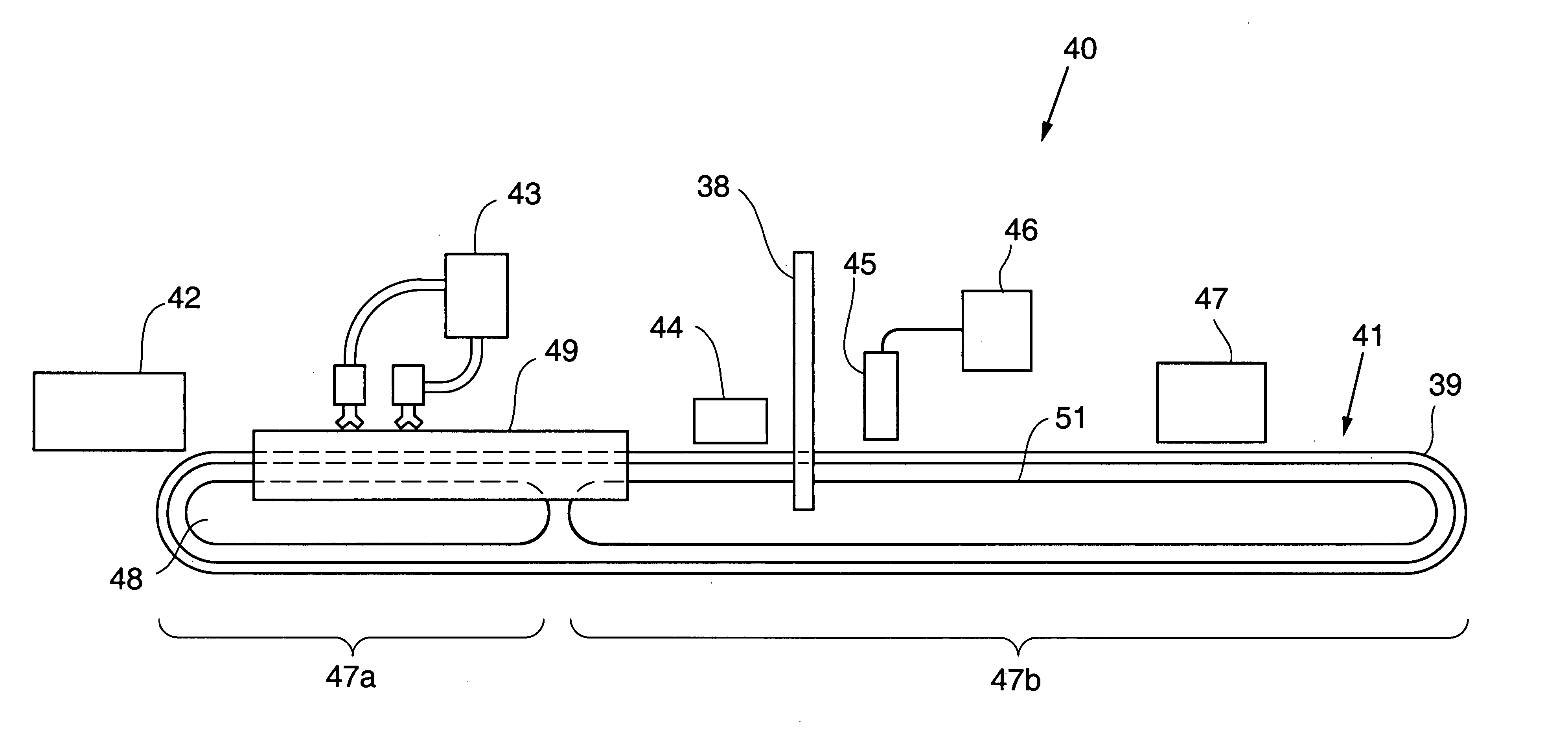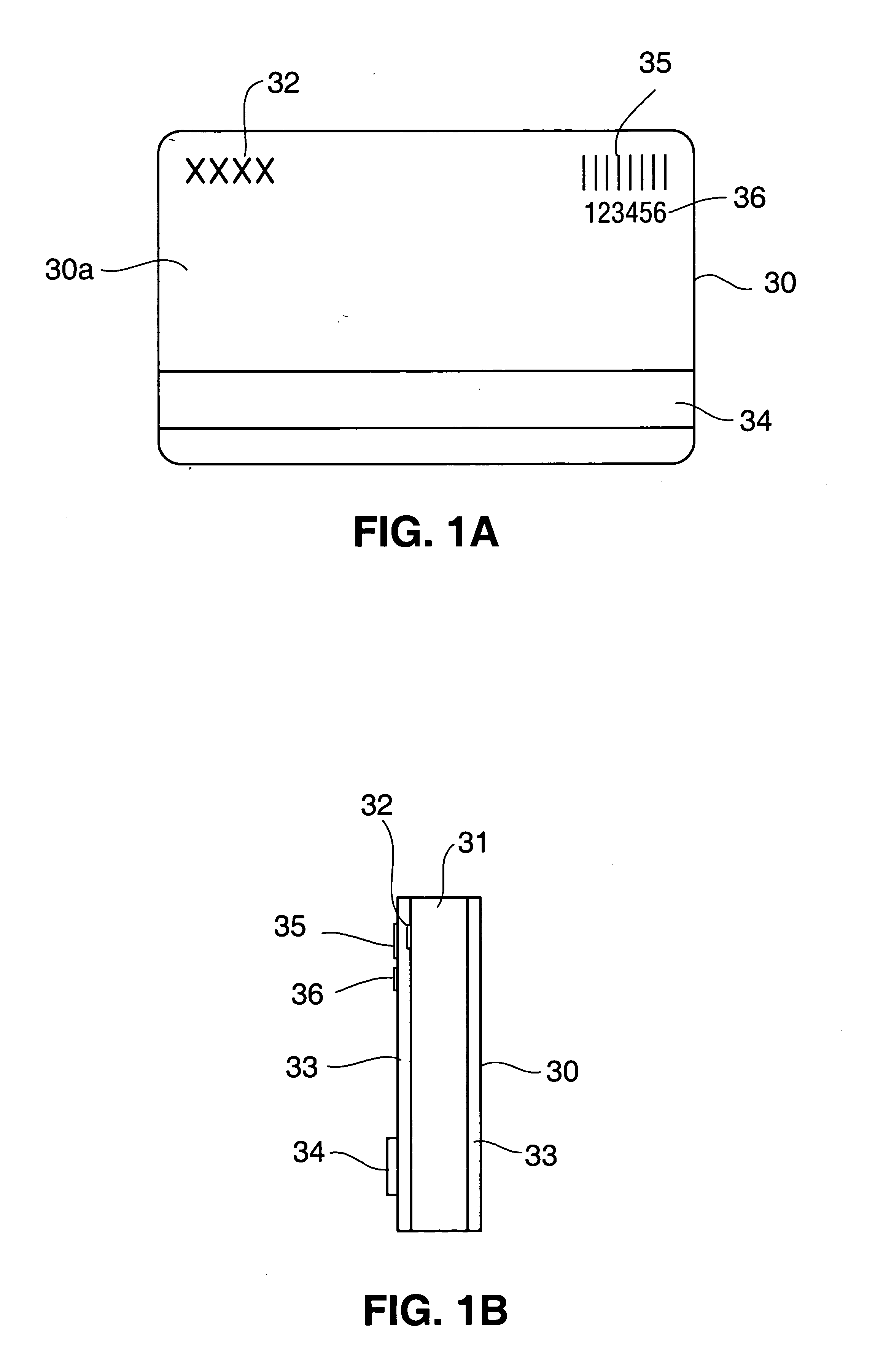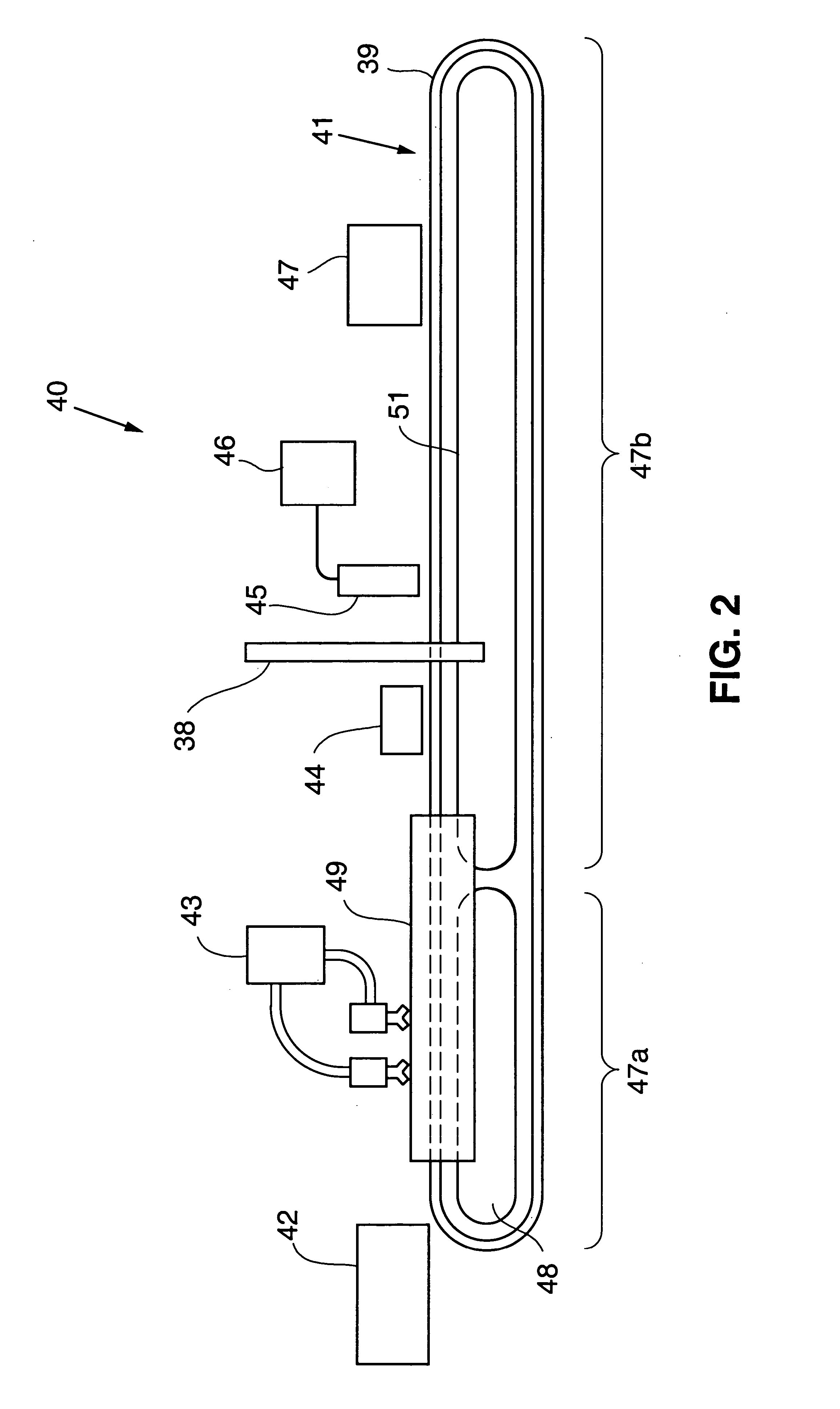Printed item having an image with a high durability and/or resolution
a printing item and high durability technology, applied in the field of printed items, can solve the problems of affecting the quality of printing, the quality of printing may be compromised, and the use of print heads damaged, so as to prevent staining of items, minimize degradation, and enhance product life
- Summary
- Abstract
- Description
- Claims
- Application Information
AI Technical Summary
Benefits of technology
Problems solved by technology
Method used
Image
Examples
example i
[0057] A Taber Test was performed on cards having bar codes printed according to various printing techniques (“Bar Abrasion Test”). The bar code on four cards of each type were abraded with a Taber Abrasor using dual CS10F abrasion wheels and 500 gram loads on each wheel. After each 50 cycle increment, the bar code was analyzed for edge contrast using a PCS Bar Code Verifier equipped with a visible light wand. The Taber abrasion wheels were re-surfaced for 50 cycles every 250 cycles of usage. The edge contrast was determined using ANSI specification, ANSI X3.182-1990 Bar Code Print Quality Guideline. Edge Contrast can be defined as the difference between bar reflectance (Rb) and space reflectance (Rs) of two adjacent elements, where each transition from a bar to a space or back again is an “edge”. Edge contrast is defined as the difference in peak values in the space (Rs) and that bar (Rb). Each edge in the scan profile is measured, and the edge that has the minimum contrast from th...
example ii
[0059] A Taber Test was performed on cards having a solid black colored bar printed on cards using the three different techniques A-C described above. The solid black color bar on six cards of each type were abraded with a Taber Abrasor using dual CS10F abrasion wheels and 500 gram loads on each wheel. After each 50 cycle increment, the black bar was tested for color density using a MacBeth model TR927 reflection color densitometer. The Taber abrasion wheels were resurfaced for 50 cycles every 250 cycles of usage. The average color (black) density from the six cards of each type, after each measurement is plotted in FIG. 11 and is set forth in Table II below.
TABLE IIBar AbrasionAfterAfterAfterAfterAfterAfterAfterAfterAfterAfter50100150200250300350400450500CardBeforeTaberTaberTaberTaberTaberTaberTaberTaberTaberTaberTypeDensityDensityDensityDensityDensityDensityDensityDensityDensityDensityDensity1A1.571.511.411.351.291.211.181.071.080.990.90B1.571.491.491.361.271.241.141.081.050.990...
example iii
[0062] In order to further assess durability, the ability of a printed bar code to resist exposure to acetone was tested. The following protocol was used to evaluate the solvent resistance of printing on the cards.
[0063] A small amount of Acetone was poured into a glass beaker. A test substrate was provided with a barcode (code 128 or comparable) with ink or other printing material. The printed substrate was wiped with a clean, lint-free cloth. The edge contrast and readability of the bar code(s) was determined with a bar code scanner capable of determining edge contrast and code readability. The cotton portion of a cotton tipped, or equivalent swab was immersed into the solvent for 3 seconds or until it is saturated with the test solvent. With light to medium pressure, the saturated swab was wiped in one direction perpendicular to the lines of the bar code, across the center of the printed area of the substrate 20 times (20 “rub strokes”). The edge contrast and readability of the ...
PUM
 Login to View More
Login to View More Abstract
Description
Claims
Application Information
 Login to View More
Login to View More - R&D
- Intellectual Property
- Life Sciences
- Materials
- Tech Scout
- Unparalleled Data Quality
- Higher Quality Content
- 60% Fewer Hallucinations
Browse by: Latest US Patents, China's latest patents, Technical Efficacy Thesaurus, Application Domain, Technology Topic, Popular Technical Reports.
© 2025 PatSnap. All rights reserved.Legal|Privacy policy|Modern Slavery Act Transparency Statement|Sitemap|About US| Contact US: help@patsnap.com



